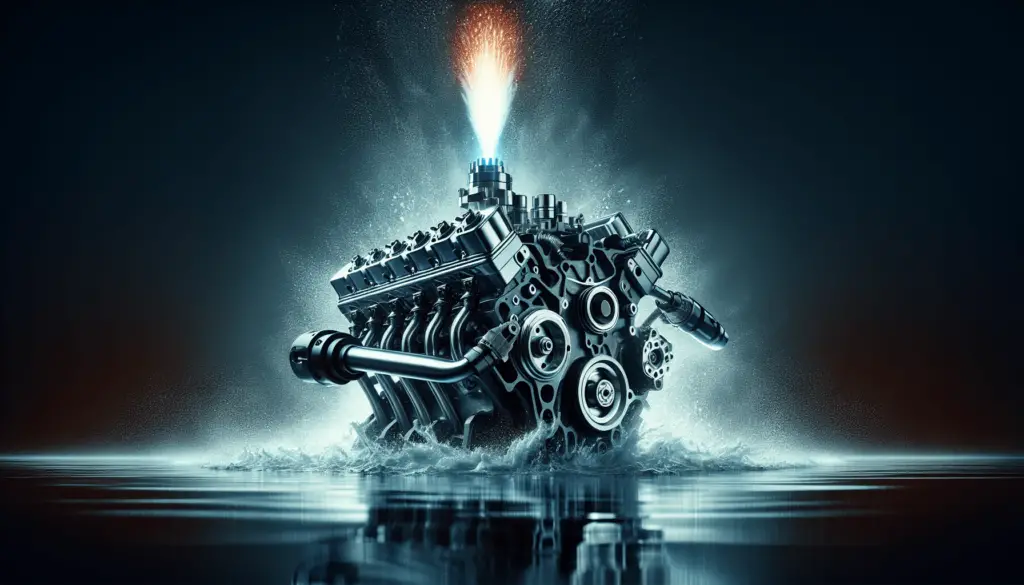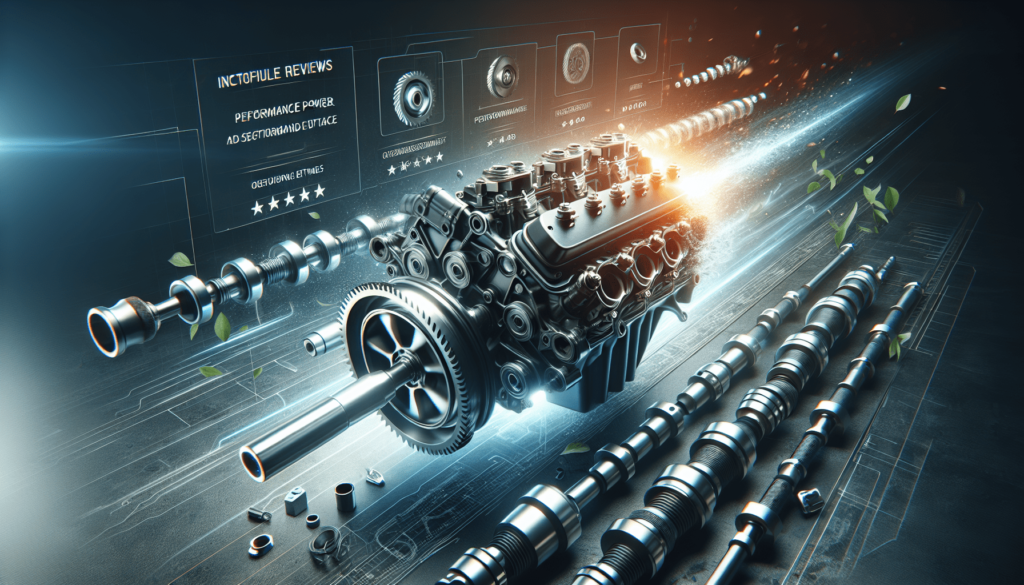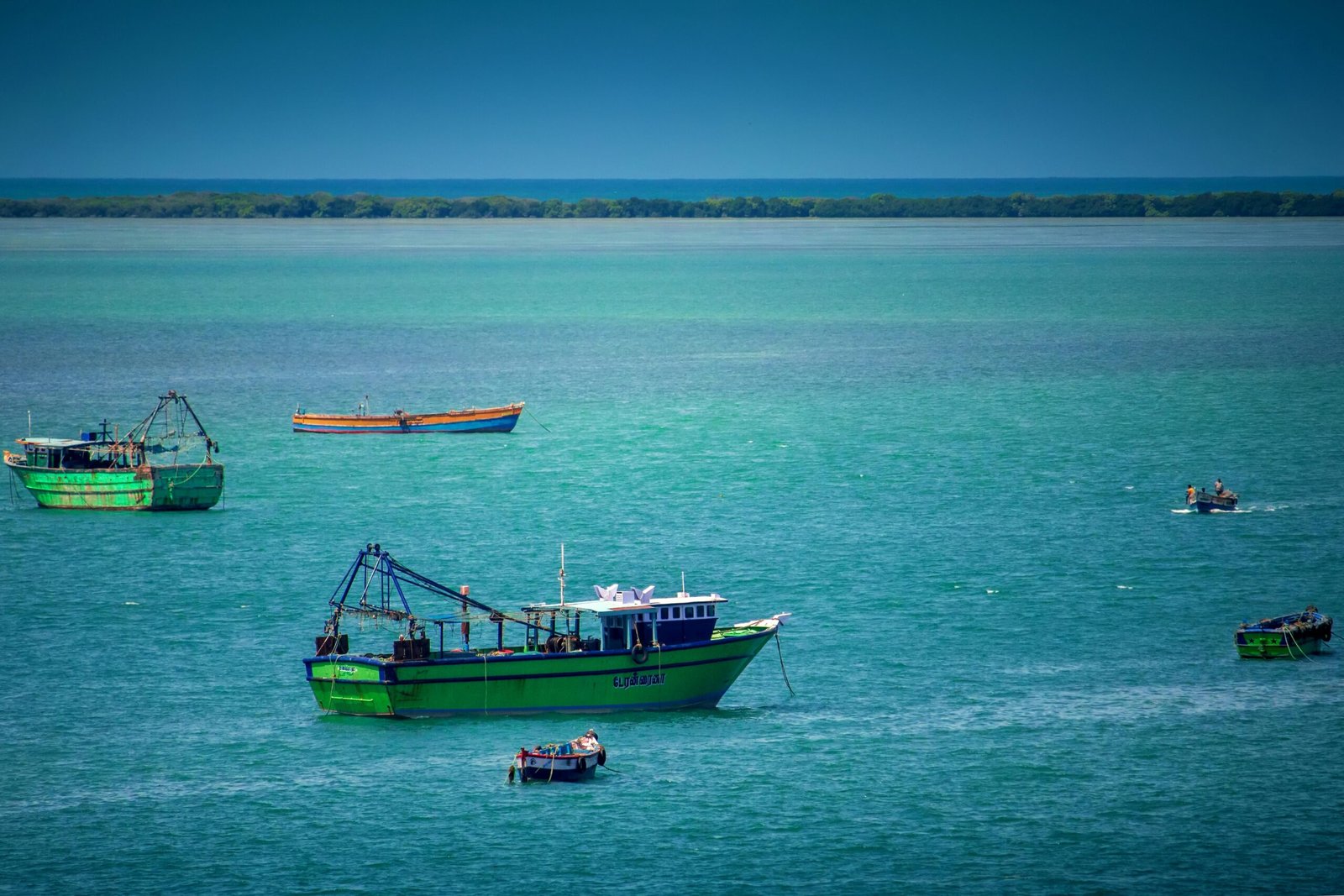You’re ready to take your boat’s performance to the next level, and the key lies in upgrading your camshaft. With so many options out there, it can be overwhelming to choose the right one for your specific needs. That’s where this buying guide comes in. In this article, we’ll walk you through everything you need to know about performance camshafts for boat engines, from understanding the basics to making an informed decision. So, buckle up and get ready to unleash the full potential of your boat.
Understanding Camshafts
Function of a Camshaft
A camshaft is a crucial component of a boat engine’s valve train system. Its main function is to control the opening and closing of the engine’s valves, which allows the intake of air and fuel and the expulsion of exhaust gases. As the camshaft rotates, the shape of its lobes pushes against the valve lifters, which actuate the valves. This synchronized movement ensures that the valves open and close at the right time, maximizing engine efficiency and power.
Types of Camshafts
There are three main types of camshafts commonly used in boat engines: hydraulic camshafts, solid camshafts, and roller camshafts. Each type has its own unique characteristics and advantages. By understanding these differences, you can choose the right camshaft that suits your boat engine’s needs.
Importance of Upgrading to Performance Camshafts
When it comes to enhancing the performance of your boat engine, upgrading to a performance camshaft can make a significant difference. A performance camshaft is designed to optimize valve timing and lift to improve horsepower, torque, and overall engine performance. By selecting the right camshaft for your boat engine, you can unleash its full potential and enjoy a thrilling on-water experience.

Factors to Consider
Boat Engine Specifications
Before selecting a performance camshaft, it is essential to consider your boat engine’s specifications. Factors such as engine displacement, cylinder configuration, and RPM range play a vital role in determining the appropriate camshaft. Matching the camshaft to your engine’s specifications ensures optimal performance and prevents any potential issues that may arise from mismatched components.
Desired Performance Goals
To choose the right performance camshaft, you need to define your desired performance goals. Are you looking for increased horsepower and torque for faster acceleration? Do you want improved fuel efficiency for longer trips? Clearly understanding your performance objectives will help you narrow down the options and select a camshaft that aligns with your goals.
Budget
Another critical factor to consider when upgrading to a performance camshaft is your budget. Camshafts come in a wide range of prices, with varying levels of performance gains. While it is tempting to opt for the most powerful and expensive option, it is important to consider your budget and find the right balance between performance and affordability.
Choosing the Right Type
Hydraulic Camshafts
Hydraulic camshafts are a popular choice for boat engines due to their ease of use and quiet operation. These camshafts use hydraulic lifters, which provide a self-adjusting system that compensates for changes in engine temperature and wear. Hydraulic camshafts are suitable for a wide range of applications and offer a good balance between performance and convenience.
Solid Camshafts
Solid camshafts, also known as mechanical or flat-tappet camshafts, rely on solid lifters and require more frequent adjustments. These camshafts are favored by performance enthusiasts due to their ability to deliver more aggressive valve lift and duration. They are commonly used in high-performance boat engines that demand precise valve timing and enhanced power output.
Roller Camshafts
Roller camshafts feature roller lifters, which allow for smoother and more efficient valve operation. The roller design reduces friction, which results in improved performance and durability. Roller camshafts are often used in high-performance boat engines that require high RPM capabilities and aggressive camshaft profiles.

Profile Design
Duration
Camshaft duration refers to the amount of time the valves stay open during each cycle of the engine. Longer duration camshafts keep the valves open for a longer period, allowing more air and fuel into the combustion chamber, which can result in increased performance. However, extremely long duration camshafts may negatively impact low-end torque and idle quality.
Lift
Camshaft lift is the distance the valves travel when opened by the camshaft lobes. Greater lift allows more air and fuel to enter the combustion chamber, enhancing performance. However, it is essential to consider other factors such as valve-to-piston clearance and cylinder head flow capabilities when selecting a camshaft with high lift to avoid any potential interference or performance issues.
Overlap
Overlap refers to the period when both the intake and exhaust valves are open simultaneously during the engine’s rotation. This timing leads to better scavenging of exhaust gases and improved performance. However, excessive overlap can result in poor idle quality and decreased low-end torque. Choosing the right amount of overlap is crucial to achieve the desired balance between performance and drivability.
Lobe Separation Angle
The lobe separation angle (LSA) refers to the distance, in degrees, between the centerlines of the intake and exhaust lobes on the camshaft. This angle determines the engine’s power characteristics, with wider LSA typically offering smoother idle and better low-end torque, while narrower LSA can provide increased top-end power. Selecting the appropriate LSA depends on the engine’s intended use and performance goals.
Material and Manufacturing
Material Selection
The choice of material for a camshaft plays a significant role in its performance and durability. Common materials include cast iron, steel, and various alloys. Cast iron camshafts are typically found in stock engines and offer good durability. Steel camshafts are favored for their increased strength and wear resistance, making them suitable for high-performance applications. Alloy camshafts, such as billet or forged variants, provide exceptional strength and are often used in extreme performance engines.
Manufacturing Techniques
Camshafts are manufactured using various techniques, each offering its own advantages. Common manufacturing methods include casting, grinding, and billet machining. Casting is a cost-effective method suitable for mass production but may have limitations in terms of precision and strength. Grinding involves precision machining to achieve the desired cam profile, while billet machining starts with a solid piece of material, allowing for maximum design flexibility and strength.

Compatibility and Fitment
Matching Camshaft with Engine
When selecting a performance camshaft, it is crucial to ensure compatibility with your boat engine. Consider factors such as engine block type, cylinder head design, valve train components, and other engine modifications. Matching the camshaft with the engine’s characteristics and specifications ensures proper fitment and optimal performance.
Clearance and Timing Considerations
Installing a performance camshaft may require adjustments to valve clearances and timing. It is essential to verify clearances between valve components, pistons, and the camshaft lobes to avoid interference or damage. Additionally, adjusting the timing of the camshaft can optimize performance, and professional tuning may be necessary to achieve the best results.
Performance Gains
Increased Horsepower and Torque
Upgrading to a performance camshaft can significantly increase your boat engine’s horsepower and torque output. By optimizing valve lift and duration, a performance camshaft allows for improved air and fuel flow, leading to enhanced power delivery and acceleration. Whether you’re looking to dominate on the water or enjoy a more spirited ride, a performance camshaft can provide the extra horsepower you desire.
Improved Throttle Response
A performance camshaft can also improve throttle response, resulting in a more immediate and crisp acceleration. By precisely controlling the valve timing, lift, and duration, a well-matched camshaft can minimize lag and provide a seamless power delivery, allowing you to effortlessly command your boat engine and enjoy a sportier on-water experience.
Enhanced Fuel Efficiency
Contrary to popular belief, upgrading to a performance camshaft can also positively impact fuel efficiency. By optimizing the valve opening and closing events, a performance camshaft can improve combustion efficiency, resulting in better fuel economy. Combined with other fuel-saving measures and proper engine tuning, upgrading to a performance camshaft can help you achieve longer trips while maximizing fuel efficiency.

Maintenance and Durability
Lubrication Requirements
Proper lubrication is crucial to ensure the longevity and performance of your performance camshaft. It is essential to follow the manufacturer’s recommended lubrication requirements and use high-quality engine oil suitable for the camshaft’s specific material and design. Regular oil changes and maintenance intervals should be strictly adhered to, as lubrication plays a vital role in preventing premature wear and ensuring optimal performance.
Recommended Maintenance Intervals
Although a performance camshaft can provide significant gains in horsepower and torque, it is important to note that it may have a shorter lifespan compared to stock camshafts. Depending on the camshaft’s design and material, maintenance intervals may vary, and regular inspections should be conducted to monitor wear and address any potential issues promptly. Adhering to the recommended maintenance intervals will help extend the camshaft’s lifespan and maintain optimal performance.
Installation and Tuning
Professional Installation vs DIY
Installing a performance camshaft can be a complex process that requires precise knowledge and experience. While some boat owners may have the necessary skills to install a camshaft themselves, it is highly recommended to seek professional installation. Professional technicians have the expertise and specialized tools to ensure proper fitment, timing, and calibration, reducing the risk of damage and maximizing performance gains.
Engine Tuning and Calibration
After installing a performance camshaft, engine tuning and calibration are essential to optimize performance and ensure reliable operation. Tuning involves adjusting parameters such as fuel delivery, ignition timing, and airflow to match the new camshaft’s characteristics. Professional tuning is highly recommended to achieve the best results, as it requires specialized knowledge, equipment, and access to dyno testing facilities.

Brand and Reputation
Researching Brands
When it comes to purchasing a performance camshaft, researching brands is crucial to ensure you are investing in a reputable and reliable product. Look for manufacturers with a proven track record of producing high-quality camshafts specifically designed for boat engines. Consider factors such as their experience, technological advancements, and customer reviews to gauge the brand’s reputation and the performance of their products.
Reading Reviews and Feedback
Reading reviews and feedback from other boat owners and enthusiasts can provide valuable insights into the performance, reliability, and durability of specific camshafts or brands. Look for reviews from individuals who have a similar boat engine setup or performance goals, as their experiences can help you make an informed decision. However, it is important to consider a range of opinions and balance them with your own research before making a final choice.
In conclusion, upgrading to a performance camshaft for your boat engine can unlock its true potential, delivering increased horsepower, improved throttle response, and better fuel efficiency. By considering factors such as engine specifications, performance goals, budget, and profile design, you can select the right camshaft for your needs. Additionally, paying attention to material and manufacturing techniques, compatibility, and fitment, as well as maintenance, installation, and tuning processes, will help ensure optimal performance, durability, and reliability. Researching brands and reading reviews will guide you in making a well-informed decision, allowing you to enjoy an exhilarating on-water experience. So, embark on your journey to upgrade your boat engine with a performance camshaft and prepare for an exciting ride like never before!

